Mexico's Economy Rebounds Outlook Revised Up
from the Dallas Fed
-- this post authored by Jesus Canas and Chloe Smith
Mexico’s gross domestic product (GDP) grew an annualized 58.0 percent in third quarter of 2020. The consensus GDP growth forecast for 2020, compiled by Banco de México, was revised up from -9.3 percent in October to -9.0 percent in November.[ 1] The latest data available show continued improvement as industrial production, employment, exports, and retail sales increased. The peso gained ground against the dollar in November, while inflation was closer to the target rate.

Output Recovers in Third Quarter
Mexico’s third-quarter GDP rose an annualized 58.0 after the second quarter’s staggering 52.4 percent drop (Chart 1). Even with this strong bounce-back, third-quarter GDP was 8.6 percent down from the same quarter a year ago. Service-related activities (including trade and transportation) were up 39.9 percent in the third quarter. Goods-producing industries (including manufacturing, construction, and utilities) increased 119.3 percent. Agricultural output grew 35.8 percent.
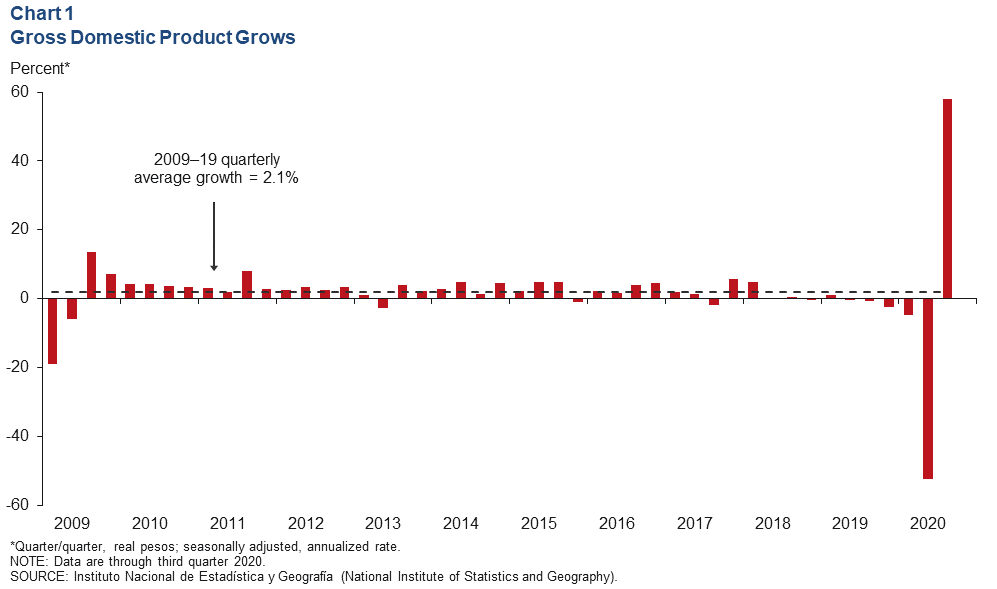
Exports Continue to Improve
The three-month moving average of total exports grew 3.3 percent in October as oil exports fell 1.1 percent and manufacturing exports rose 3.1 percent (Chart 2). On a month-over-month basis, both total and manufacturing exports expanded by 4.8 percent in October. This year through October, exports have fallen 13.7 percent compared with the same period in 2019.
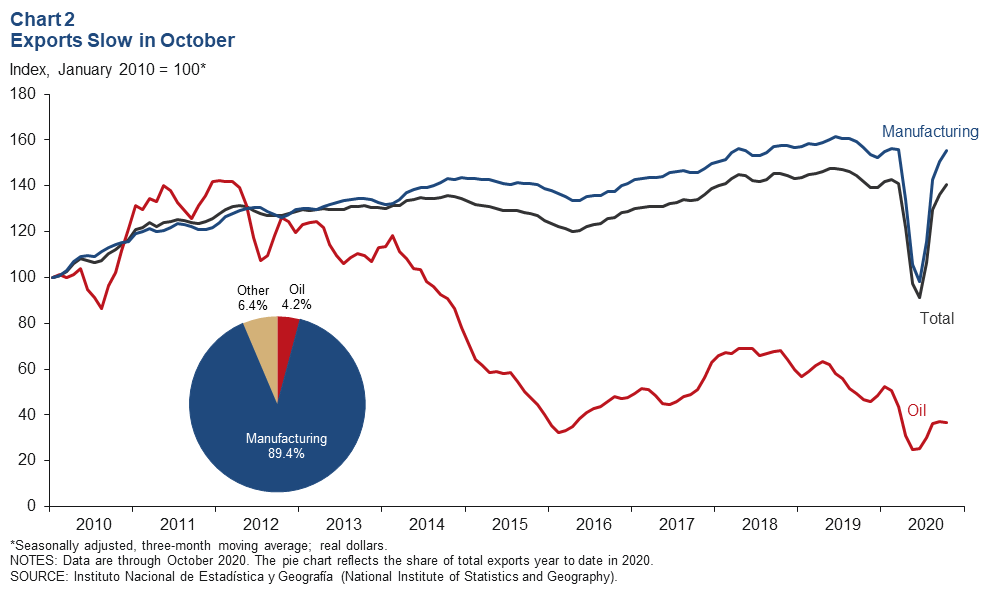
Industrial Production Expands Further
The three-month moving average of Mexico’s industrial production (IP) index - which includes manufacturing, construction, oil and gas extraction, and utilities - increased 1.9 percent in October, and manufacturing IP was up 1.5 percent (Chart 3). On a month-over-month basis, IP was up 2.0 percent in October, while the manufacturing index increased 1.8 percent. North of the border, U.S. IP grew 0.4 percent in November after rising 1.0 percent in October, and the three-month average continued to increase. The correlation between IP in Mexico and the U.S. increased considerably with the rise of intra-industry trade as a result of the 1994 North American Free Trade Agreement, recently replaced by the United States - Mexico - Canada Agreement.
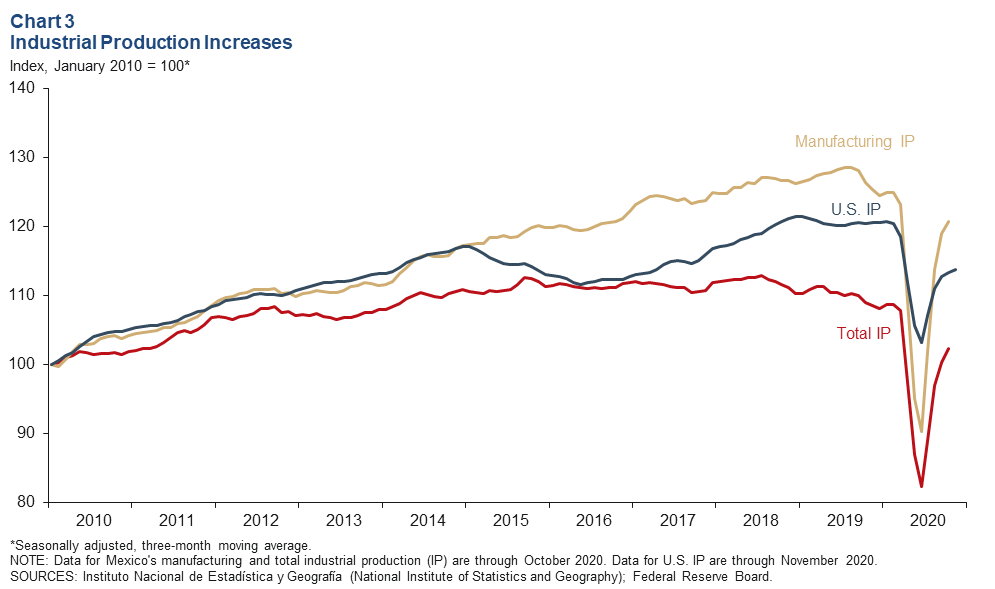
Retail Sales Increase in September
The index of real retail sales in Mexico increased 3.6 percent based on a three-month moving average through September (Chart 4). On a month-over-month basis, retail sales rose 2.7 percent in September, the same growth as in August. However, the retail sales index was down 7.0 percent in September relative to December 2019 levels.
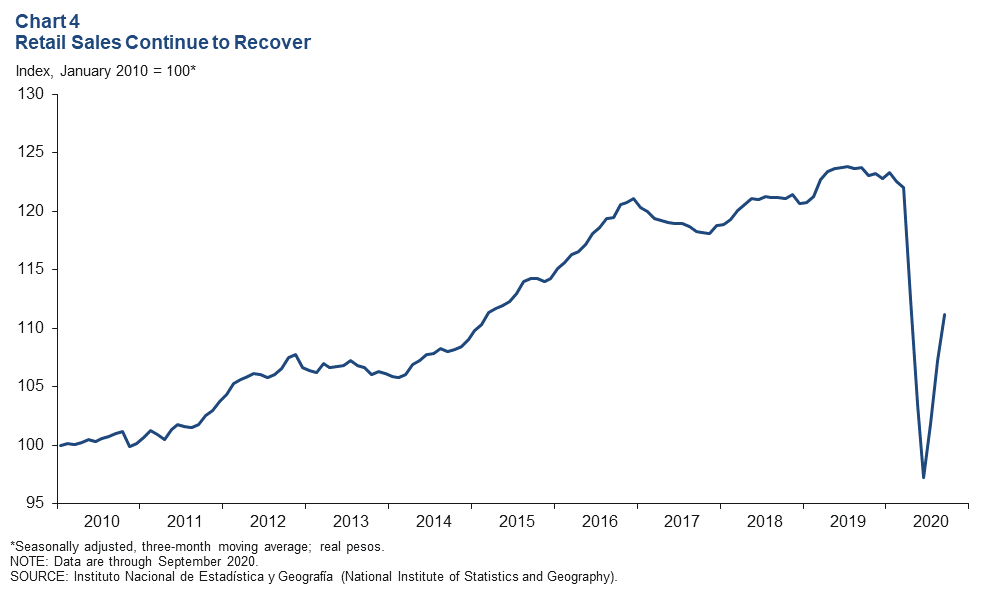
Payroll Expansion Continues
Formal sector employment - jobs with government benefits and pensions - rose an annualized 4.3 percent (68,800 jobs) in November, faster than October’s 4.0 percent increase (Chart 5). Year-over-year employment contracted 3.6 percent in November. Total employment, representing 51 million workers and including informal sector jobs, declined 7.6 percent year over year in third-quarter 2020 - far below its 10-year average of 1.9 percent growth. The unemployment rate in October was 4.7 percent, up from 3.6 percent a year earlier.
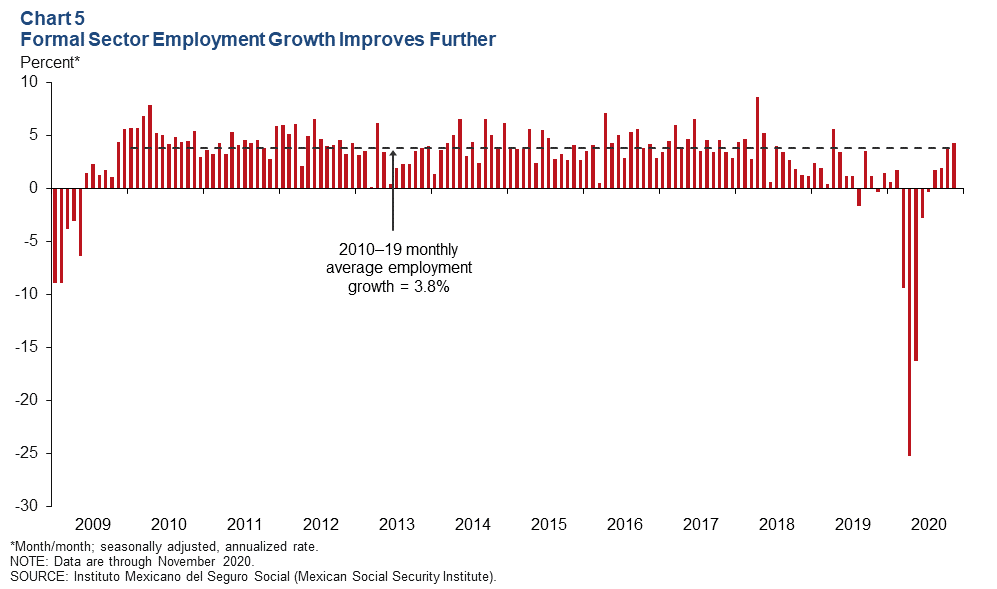
Peso Gains Ground Against the Dollar
The Mexican currency averaged 20.4 pesos per dollar in November - up 4.4 percent from October - and is up 19.1 percent since April (Chart 6). The peso has depreciated 6.3 percent against the dollar since December 2019. The peso has been under pressure due to increased uncertainty regarding the impact of COVID-19 on domestic and global growth.
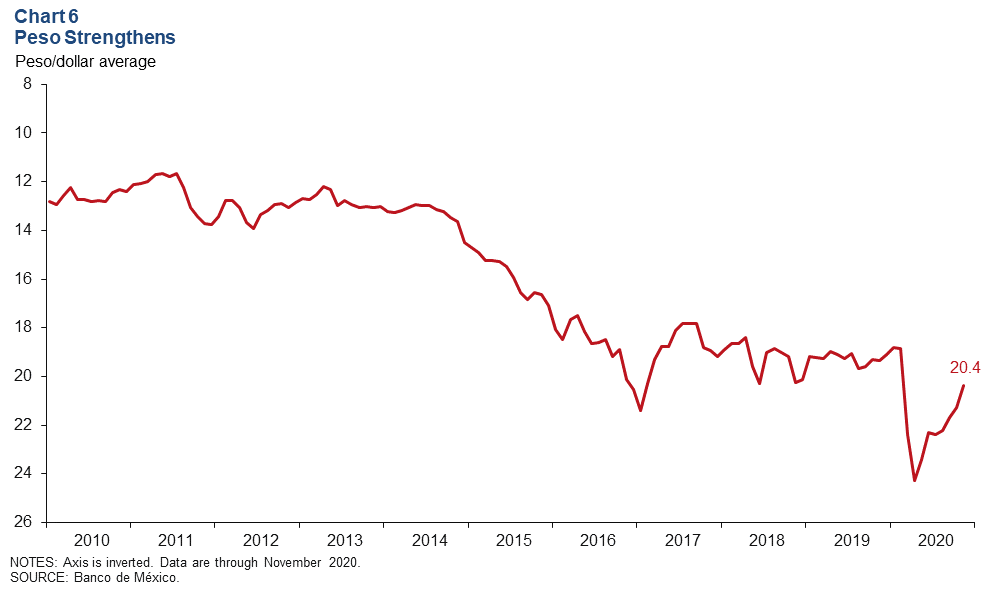
Foreign-Owned Government Debt Share Down
The three-month moving average of peso‐denominated Mexican government debt held abroad declined to 21.9 percent, despite an increase to 22.2 percent in November (Chart 7). The extent of nonresident holdings of government debt is an indicator of Mexico’s exposure to international investors and is also a sign of confidence in the Mexican economy.
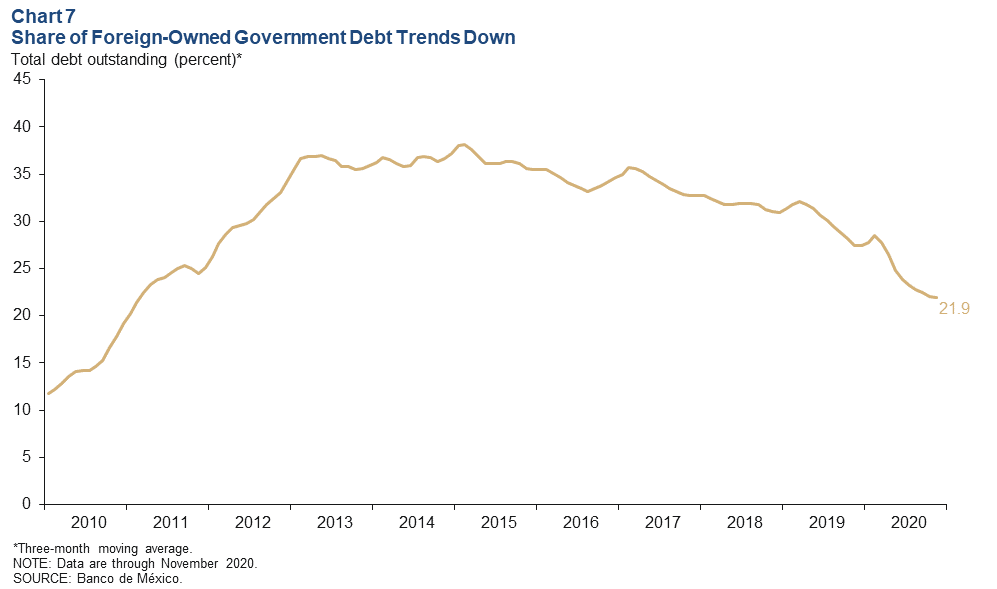
Inflation Closer to Long-Term Target Rate
Mexico’s consumer price index (CPI) increased 3.3 percent year over year in November, down from 4.1 percent in October (Chart 8). CPI core inflation (excluding food and energy) rose 3.7 percent year over year in November. Banco de México held its key interest rate at 4.25 percent in its December meeting. Central bank policymakers said the pause will provide the necessary room to confirm the current downward trend in inflation.
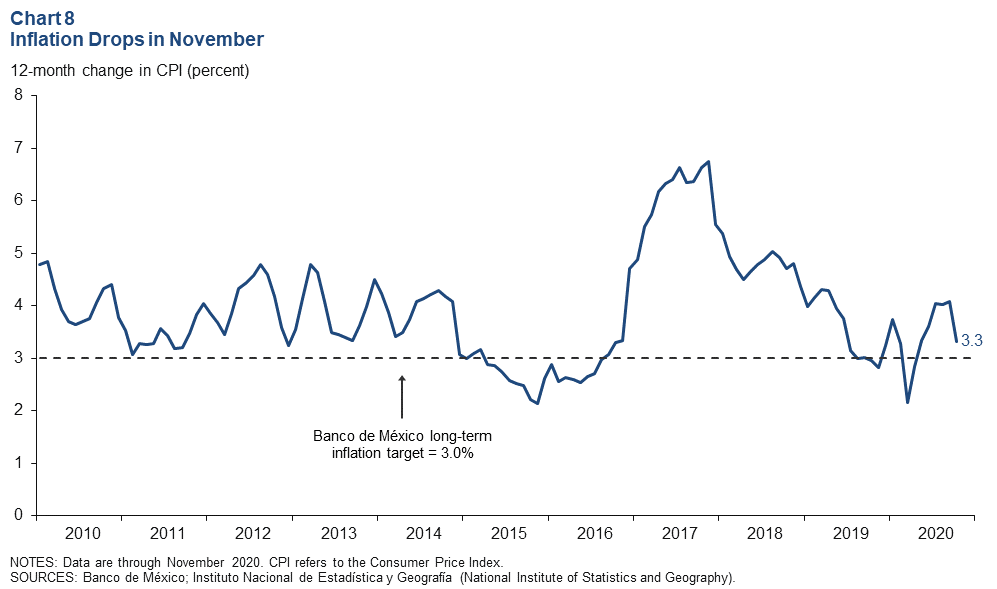
Notes
- Encuesta sobre las Expectativas de los Especialistas en Econom'a del Sector Privado: Noviembre de 2020, (communiqué on economic expectations, Banco de México, November 2020). The survey period was Nov. 18 - 27.
About the Authors
Cañas is a senior business economist, and Smith is a research analyst in the Research Department at the Federal Reserve Bank of Dallas.
Disclaimer: No content is to be construed as investment advice and all content is provided for informational purposes only. The reader is solely responsible for determining whether any investment, ...
more


